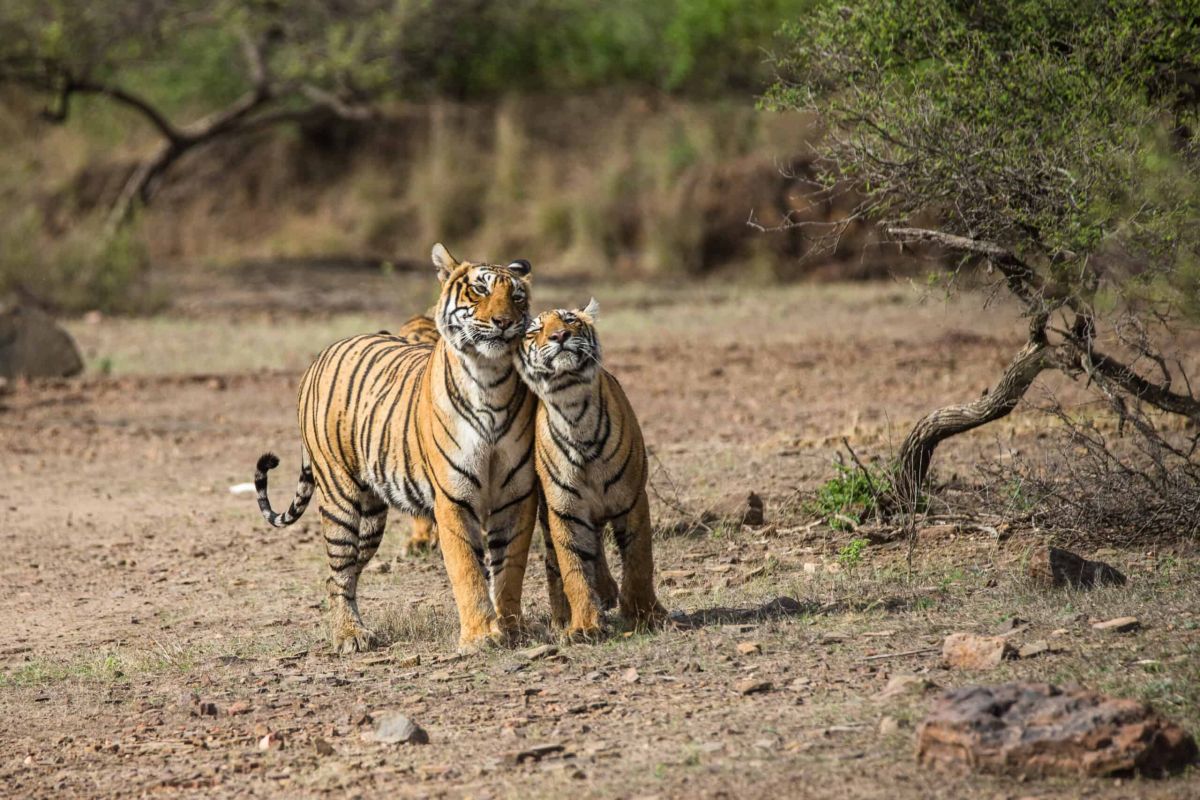The Mating Rituals of Big Cats

We often see them as majestic symbols of power and grace, but behind the raw strength and stunning coats of big cats like lions, tigers, and leopards lie complex social structures and intriguing mating rituals. These powerful predators engage in elaborate courtship behaviors that are crucial for successful reproduction and the continuation of their species. Let’s delve into the fascinating world of big cat courtship and explore the diverse strategies they employ to find and secure a mate.
Lions: A Roaring Display of Power and Persistence
Perhaps the most well-known of the big cats, lions live in prides, tight-knit family groups typically consisting of related females, their offspring, and a coalition of male lions. Mating within a pride is primarily controlled by the dominant male(s). When a lioness enters estrus (the period of sexual receptivity), the dominant male will dedicate himself entirely to her.
The courtship of lions is a lengthy and somewhat arduous process. A male lion will follow the female closely, monitoring her behavior and scent. He may nudge, lick, or even gently bite her to gauge her receptiveness. The pair will often isolate themselves from the rest of the pride for several days, engaging in frequent mating. Copulation can occur dozens of times a day, a strategy aimed at ensuring fertilization.
This intense period of mating is not without its challenges. Other males may attempt to challenge the dominant male’s position and disrupt the process. Roaring, displays of aggression, and even fights can erupt as rivals vie for the opportunity to mate with the lioness. The sheer dedication and tenacity of the dominant male underscore the importance of reproduction in the lion’s social hierarchy.
Tigers: A Symphony of Scent and Sound
Solitary creatures by nature, tigers exhibit a different approach to courtship than their pride-dwelling relatives. When a tigress is ready to mate, she will leave scent markings, like urine and scratch marks, in strategic locations within her territory. These fragrant signals act as an invitation to potential mates, advertising her availability and location.
Male tigers, guided by these olfactory clues, will traverse vast territories in search of a receptive female. Upon finding a potential mate, the male will engage in a series of vocalizations, including roars and soft moans, to announce his presence and intentions. The tigress responds in kind, engaging in a “call-and-response” that allows them to assess each other’s suitability.
The courtship process can be lengthy, with the pair often spending several days together before mating actually occurs. During this time, they may engage in playful interactions, like rubbing against each other and gentle sparring. Once the tigress is receptive, mating occurs, albeit less frequently than in lions. After a successful mating, the male typically departs, leaving the female to raise the cubs alone.
Leopards: Elusive Encounters in the Shadows
Even more elusive than tigers, leopards are generally solitary animals that only come together to mate. Like tigers, leopards rely heavily on scent marking to signal their presence and availability to potential partners. Male leopards will patrol their territories, leaving behind scent trails that communicate their dominance and reproductive status.
When a female leopard is in estrus, she will use vocalizations to attract a male. These sounds, combined with the scent markings, help males locate receptive females within their territories. Upon finding a potential mate, the male will approach cautiously, observing the female’s behavior for signs of acceptance.
The courtship of leopards is often brief and pragmatic. If the female is receptive, mating will occur, often accompanied by growls and snarls. After mating, the pair typically separates, returning to their solitary lives. The female leopard then takes on the responsibility of raising her cubs alone, hidden away in a secluded den.
A Common Thread: Ensuring Survival
Despite the variations in their social structures and mating rituals, all big cats share a common goal: ensuring the survival of their species. Their elaborate courtship behaviors, often involving displays of strength, endurance, and sensory communication, serve to attract the best possible mate and secure the continuation of their lineage.
Understanding the mating rituals of big cats is not just a matter of scientific curiosity. It’s also crucial for conservation efforts. By understanding their reproductive behavior, we can better protect their habitats and manage populations, ensuring that these magnificent creatures continue to roam the earth for generations to come. As we continue to learn more about these fascinating animals, we gain a deeper appreciation for their complex lives and the vital role they play in the natural world.



